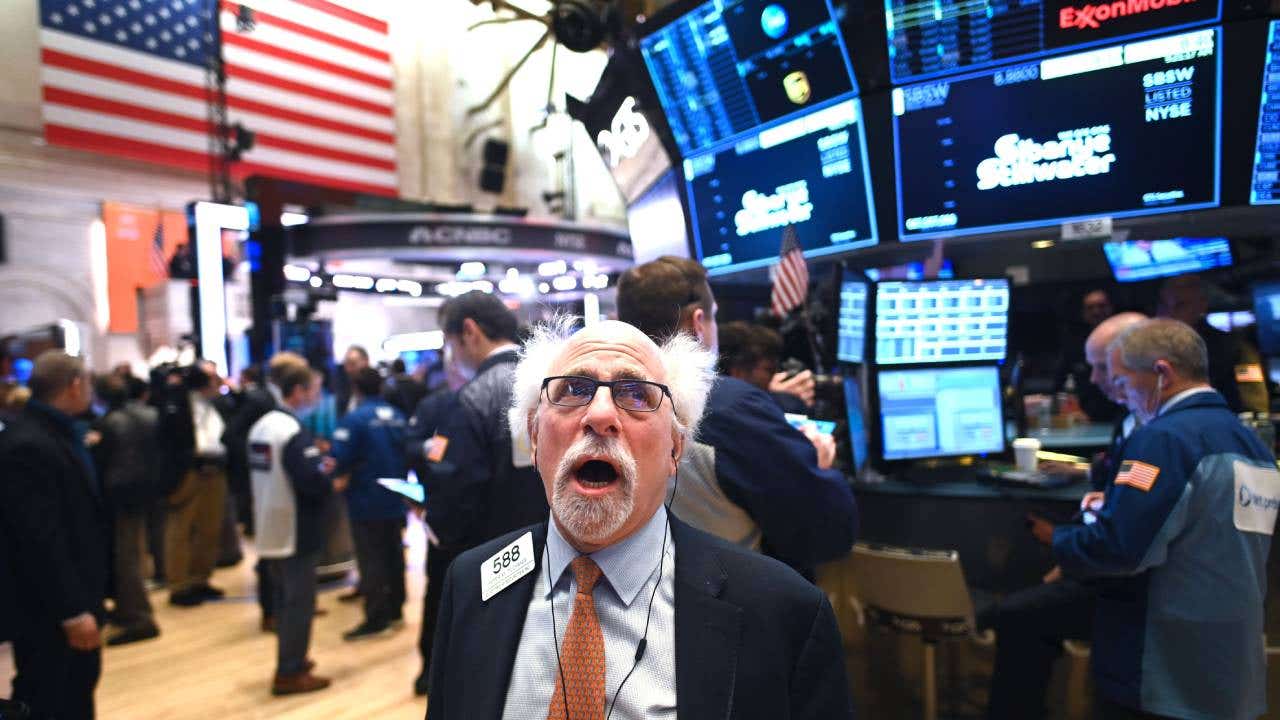Investing in a bear market 2025

A bear market is a prolonged period of price declines in a stock or entire market, usually of 20 percent or more from a recent high. Investors typically track the world’s major indexes like the S&P 500 and the Dow Jones Industrial Average to see when they enter bear market territory.
Individual stocks or asset classes can also enter a bear market if they experience price declines of 20 percent or more. The good news is that bear markets do not tend to last long, on average a little under 10 months, according to Hartford Funds.
- There have been 27 bear markets in the S&P 500 since 1928, with six of them taking place since 2000.
- The S&P 500 has lost an average of around 35 percent during bear markets since 1928, says Hartford Funds.
- Bear markets are as much a part of history as they are the economic cycle. Notable bear markets include those during the Great Depression of the 1930s and the dotcom bubble of the late 1990s.
- One of the shorter bear markets in history came during the onset of the COVID-19 pandemic in February 2020 and lasted just 33 days but wiped almost 34 percent off the S&P 500.
- Bear markets in the S&P 500 happened on average about every 3.5 years since 1928.
- About 78 percent of the market’s best days have happened in bear markets or early in what became a bull market, according to Hartford Funds.
What is a bear market?
There is no exact science for distinguishing or recognizing a bear market, but market watchers generally refer to a decline of 20 percent or more as a bear market.
Bear markets often occur in the period before an economic downturn, and they largely indicate that investors are starting to pull back. If there is a higher ratio of risk-averse investors to risk-tolerant, this can also often be considered a bear market, or “bear-market territory.” Conversely, in a bull market, investors charge ahead and often buy at a rapid pace.
When investors start to hear that markets could be headed for a bear market or into bear market territory, it’s important to take notice and be ready to adjust your investments, if needed.
Bear markets often signal recessions but can sometimes occur in the midst of longer-term bull markets, representing a temporary lull. Since it’s difficult to discern which way markets will swing and when, keeping an eye on your investments is all the more important.
Bear markets could be caused by an overheating of the economy via runaway inflation, political unrest that bleeds into markets, economic uncertainty or some other cause entirely.
Historical data on bear markets
Although investors fear bear markets, they are fortunately often short-lived.
As mentioned above, the average bear market lasts about 9.6 months. Meanwhile, the shortest S&P 500 bear market in history lasted just over one month, occurring in 2020 at the outset of the COVID pandemic.
In total, there have been 27 bear markets in the S&P 500 since 1928, with 12 of them between 1928 and 1945. Since 1945, there have been 15 bear markets, averaging out to about one every 5.1 years.
While bear markets can scare investors, they occur only a minority of the time. From 1929 to 2023, bear markets accounted for just 22 percent of market history, Hartford Funds says. In other words, stocks have been flat or on the rise 78 percent of the time.
And not only are bear markets short-lived, they tend to be less powerful than bull markets.
On average, the S&P 500 has lost around 35 percent during bear markets, according to Hartford Funds. To put that into perspective, the average bull market sees a 111 percent gain. In fact, about 78 percent of the market’s strongest days have happened in bear markets or early on in bull markets when the shift was tough to spot, according to Hartford Funds.
Investors who are anticipating a 50-year investing horizon can expect to live through about 14 bear markets, Hartford Funds says. That means becoming comfortable with market dips and learning to ride a bear market out.
Bear markets can cause investors to become skittish, which can result in investors selling assets from fear. This can become contagious, and further deepen a bear market. Investors who might not have intended to sell before can suddenly get trapped in a panic selling frenzy, which can lead to selling assets that could be more valuable in the long term.
Bear markets since 1929
| Dates | Percentage drop | Duration |
|---|---|---|
| 9/7/1929 – 11/13/1929 | -44.7 | 67 days |
| 4/10/1930 – 12/16/1930 | -44.3 | 250 days |
| 2/24/1931 – 6/2/1931 | -32.9 | 98 days |
| 6/27/1931 – 10/5/1931 | -43.1 | 100 days |
| 11/9/1931 – 6/1/1932 | -61.8 | 205 days |
| 9/7/1932 –2/27/1933 | -40.6 | 173 days |
| 7/18/1933 – 10/21/1933 | -29.8 | 95 days |
| 2/6/1934 – 3/14/1935 | -31.8 | 401 days |
| 3/6/1937 – 3/31/1938 | -54.5 | 390 days |
| 11/9/1938 – 4/8/1939 | -26.2 | 150 days |
| 10/25/1939 – 6/10/1940 | -32.0 | 229 days |
| 11/9/1940 – 4/28/1942 | -34.5 | 535 days |
| 5/29/1946 – 5/17/1947 | -28.8 | 353 days |
| 6/15/1948 – 6/13/1949 | -20.6 | 363 days |
| 8/2/1956 – 10/22/1957 | -21.6 | 446 days |
| 12/12/1961 – 6/26/1962 | -28.0 | 196 days |
| 2/9/1966 – 10/7/1966 | -22.2 | 240 days |
| 11/29/1968 – 5/26/1970 | -36.1 | 543 days |
| 1/11/1973 – 10/3/1974 | -48.2 | 630 days |
| 11/28/1980 – 8/12/1982 | -27.1 | 622 days |
| 8/25/1987 – 12/4/1987 | -33.5 | 101 days |
| 3/24/2000 – 9/21/2001 | -36.8 | 546 days |
| 1/4/2002 – 10/9/2002 | -33.8 | 278 days |
| 10/9/2007 – 11/20/2008 | -51.9 | 408 days |
| 1/6/2009 – 3/9/2009 | -27.6 | 62 days |
| 2/19/2020 – 3/23/2020 | -33.9 | 33 days |
| 1/3/2022 – 10/12/2022 | -25.4 | 282 days |
| Source: Hartford Funds | ||
Bear market 2022
In 2022, the S&P 500 suffered its worst year since 2008, falling nearly 20 percent. The S&P 500 entered bear market territory on June 13, 2022, after closing over 20 percent down from its high on Jan. 3, 2022.
Since then, investor concerns about inflation and a record pace of interest rate hikes by the Federal Reserve have largely abated. A recession never arrived, and stocks exited bear market territory by October 2022. Stocks rallied in 2023 and 2024, leading to new all-time highs, and eventually, a series of rate cuts by the Fed in September 2024.
How to invest in a bear market
Although bear markets can be concerning, they also provide opportunities to investors. If you know where to look, you can find opportunities to make attractive investments or at the very least, maintain the ones you already have.
Below are some strategies to help get you through a bear market and keep your investment goals intact.
Fight the urge to sell it all
The most brash strategy would be to sell everything and move all positions into cash. This safeguards your money today but may not be the best move to protect it long term.
Considering bear markets tend not to last too long, losing the purchasing power of your cash due to high inflation could potentially be a worse alternative. Many people think they’ll be able to jump back in the market at the right time, but this is difficult and many end up buying stocks well after the recovery has begun.
The mood surrounding a bear market can be bleak, but it’s important to fight the urge to sell everything off at the first sign of a headwind.
Invest defensively
Another option is to invest in defensive stocks or funds that traditionally perform well during market downturns. These may be in areas that are considered necessities, regardless of the market situation, including food and personal care stocks. Utilities are another sector that tends to perform well during market downturns.
A prudent investor could look to shift some of their portfolio to these assets during an anticipated downturn, especially in high-rate or high-inflation environments, as it could prove more beneficial than cash.
Hedge with bonds
Investing in bonds is also a common strategy to protect oneself during a bear market. Bond prices often move inversely to stock prices, and if stocks decline, a bond investor could stand to benefit.
Short-term bonds in a bear market could help investors weather the (hopefully) short-term downturn. Higher-quality or investment-grade bonds would be a better choice here for investors whose goal is to hedge overall market risk during bear markets. Choosing riskier bonds during a bear market could compound losses from equities that might already be underperforming during a bear market.
Hedge with dividend stocks
Dividend stocks pay out a portion of a company’s profit back to the investor in the form of a dividend, so even if the stock price falls, investors can still receive income. Dividend stocks are a smart way to hedge the effects of a bear market, as income coming in counteracts the losses in other assets.
Dividend stocks also tend to be somewhat less volatile than the average stock, giving your portfolio some extra protection that way, too.
Take advantage of the lipstick effect
The “lipstick effect” is the idea that consumers tend to spend more on tiny indulgences during economic recessions and downturns rather than on luxuries. While this could fall under “personal care” categories as recommended above, cosmetic companies in particular tend to fare well during economic downturns and many attribute this to the lipstick effect.
To double down, investors could consider cosmetic companies that also pay dividends to boost their portfolio during a bear market. Major players in the beauty industry can provide stability as well as dividends during times of market uncertainty. One can achieve this through cosmetics, but also through small luxuries like Starbucks or a night out to eat. Investors can take advantage of this by leaning into similar stocks or funds that follow popular food and entertainment industries.
Re-balance your portfolio
Bear markets are a good time to re-assess any growth stocks or small-to-mid-cap stocks you have held on to. Market instability might prove to be too much for still-developing businesses to handle, and without the financial resources of their larger counterparts, certain growth stocks might be better left to the side.
This is not to say that you should sell off all of your assets — bear markets can also provide a wonderful buying opportunity for the right growth stocks — but a reassessment would be wise.
Moving into higher percentages of bonds and stable asset classes is an obvious move, and keeping an eye on value vs. growth stocks will be key in the long term. Growth stocks have their place in a diversified portfolio, but value stocks that are fundamentally sound and have the potential for long-term success will be particularly important during market downturns.
Stay the course
The most important thing an investor can do during a bear market (once they’ve assessed their holdings accordingly) is to wait it out. It’s not easy watching headlines blare all day and listening to friends speak about selling everything off, as it only adds to your jitters. Investing is a game best played long, and what you do during the downturns will define your performance over time.
Most investors in retirement accounts like 401(k)s and IRAs will do well to stay put in their investments. Unless you have an immediate need for cash, you will likely regret selling once the market recovers.
Bottom line
Bear markets can be painful, but thankfully are usually short-lived. While it may seem like selling during a bear market is easy, timing the market can be impossible, even for professionals. This means the most important thing an investor can do is pick high-quality investments with the intention to hold them long-term — while always keeping a keen eye on positions that might need special attention like growth stocks and potentially volatile investments.
— Bankrate’s Rachel Christian contributed to an update.
Editorial Disclaimer: All investors are advised to conduct their own independent research into investment strategies before making an investment decision. In addition, investors are advised that past investment product performance is no guarantee of future price appreciation.






